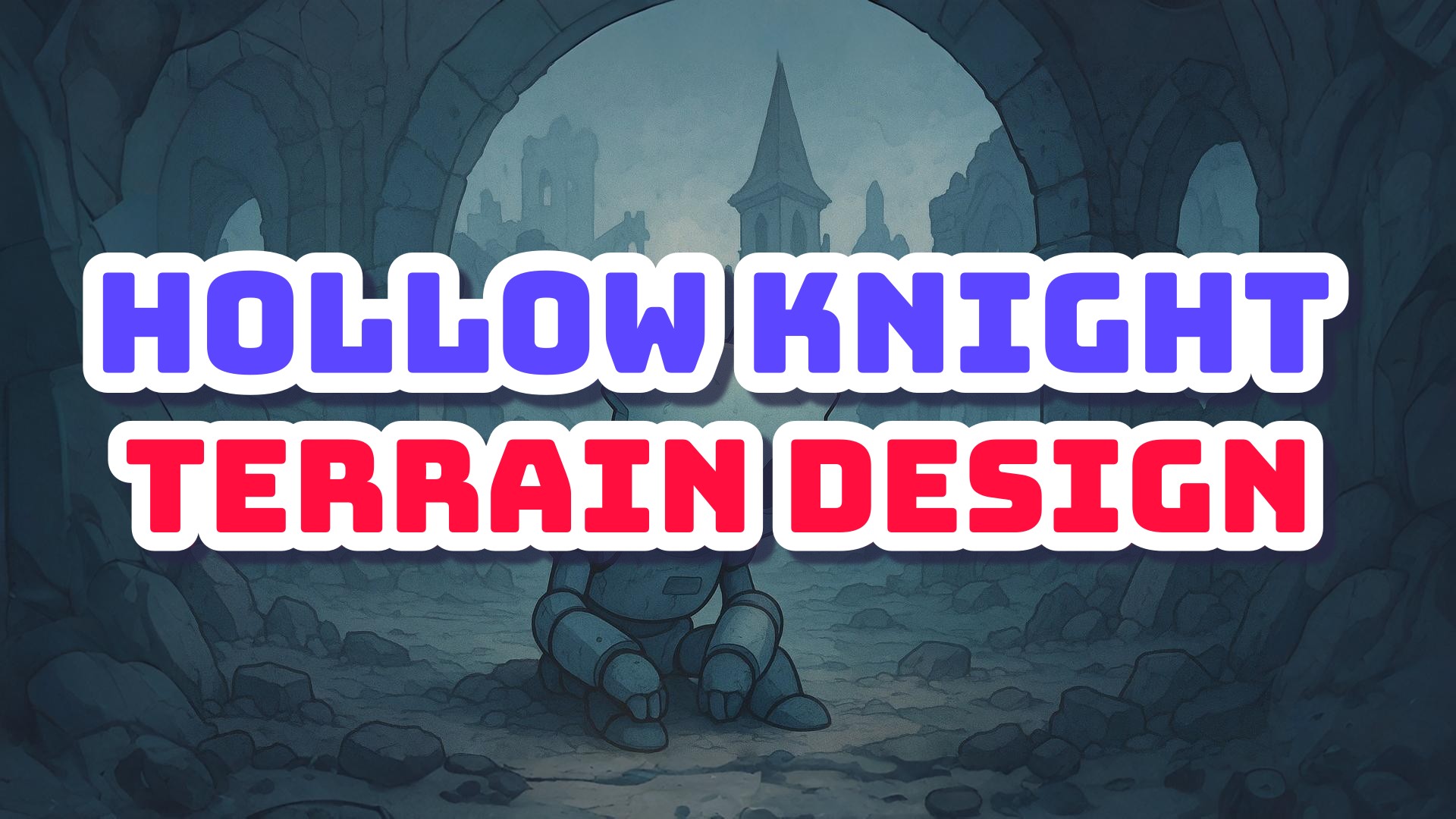The Hidden Genius Behind Hollow Knight’s Terrain Design

If you've played Hollow Knight, you might have noticed something unusual: there are no pass-through platforms. You know, those platforms you can jump up through from below and land on from above? They're a staple in most platformers, but Team Cherry made a deliberate choice to exclude them entirely.
In my opinion, this has all to do with pass-through platforms being way too complicated to implement in other engines, especially Unity.
At first glance, this might seem like a minor design decision. But when you dig deeper, it reveals a brilliant approach to level design that fundamentally shaped one of the best metroidvanias ever made.
The Problem with Pass-Through Platforms in Metroidvanias
Pass-through platforms are convenient...perhaps too convenient. In a metroidvania, where exploration and progression are core pillars of the experience, pass-through platforms can actually undermine your design goals.
Here's why:
They Reduce Your Ability to Gate Progression
Metroidvanias rely on the key-lock mechanism: players encounter obstacles they can't overcome until they acquire new abilities. This creates a sense of progression and encourages exploration as players revisit earlier areas with newfound powers.
Pass-through platforms complicate this design. Since players can jump through them from below, they're difficult to use as effective barriers. You can't easily prevent a player from reaching a higher area if they can simply jump up through a platform, unless you add additional obstacles, which can feel arbitrary or cluttered.
They Create Ambiguity in Navigation
When players encounter a platform, they need to understand its properties immediately: Can I stand on it? Can I pass through it? Which direction? This adds a layer of cognitive load that can disrupt the flow of gameplay, especially in fast-paced combat scenarios.
In Hollow Knight, every surface is solid and predictable. Players always know exactly how terrain will behave, allowing them to focus on navigation, combat, and exploration without second-guessing the environment.
They Limit Vertical Level Design Options
Without pass-through platforms, Team Cherry was forced to design rooms with clear, intentional pathways. Every vertical space requires deliberate platforming, like finding ledges, wall-jumping, or using abilities like Monarch Wings (double jump) or Mantis Claw (wall climb).
This constraint actually enhanced the level design. Rooms feel more crafted and purposeful. Vertical progression becomes a puzzle to solve rather than a convenience to exploit. And most importantly, abilities like double jump feel genuinely empowering because they open up areas that were completely inaccessible before, not just slightly easier to reach.
Terrain as a Key-Lock Mechanism
Please, skip to 01:27:29
This footage shows exactly what I mean: a sequence of platforming puzzles that can be solved using skills found later in the game, making the terrain a gating mechanism that locks players' progress until they find the key (skill).
By removing pass-through platforms, Hollow Knight transforms simple terrain into effective progression gates:
- High ledges become barriers that require a double jump (Monarch Wings) to reach
- Vertical shafts demand wall climbing (Mantis Claw) to ascend
- Wide gaps require a dash (Mothwing Cloak) to cross
- Acid pools need immunity (Isma's Tear) to traverse
- Spike pits need pogoing mastery to overcome
Each ability unlock feels meaningful because it genuinely expands where you can explore. The world doesn't just become easier to navigate, it literally opens up new paths that were impossible before.
What This Means for Your Platformer
If you're designing a metroidvania or exploration-focused platformer, consider whether pass-through platforms actually serve your design goals. They're not inherently bad; many excellent games use them successfully, but they do come with trade-offs.
Ask yourself:
- Do I want the terrain itself to act as a gating mechanism?
- How will pass-through platforms affect my ability to control exploration?
- Will players always understand how to interact with these platforms in my game's context?
The answers will depend on your specific design vision. But Hollow Knight proves that sometimes, removing a common mechanic can lead to stronger, more cohesive design.
Want to Learn More About Pass-Through Platform Design?
This is just one example of how seemingly small design decisions can have profound impacts on your game. If you want to dive deeper into platformer mechanics like pass-through platforms, the Platformer Essentials Cookbook has an entire chapter dedicated to this topic.
The book breaks down:
- How to implement pass-through platforms effectively
- When to use them (and when to avoid them)
- Technical considerations and common pitfalls
- Design patterns from successful games
Right now, you can get 25% off the Platformer Essentials Cookbook and support our funding campaign to add 4 brand-new recipes to the book. Whether you're building your first platformer or refining your craft, this resource will help you make informed design decisions that elevate your game.
👉 Get your copy with 25% off and help us expand the cookbook: https://itch.io/s/161218/create-your-own-metroidvania-in-godot-the-hollowbot-update
What design decisions have you made in your games that seemed small but had big impacts? I'd love to hear about them in the comments below!
Get Platformer Essentials Cookbook
Platformer Essentials Cookbook
A 200+ pages ebook with 12 step-by-step tutorials with essential features to create platformer games
| Status | Released |
| Category | Book |
| Author | Ludonauta |
| Genre | Educational, Platformer |
| Tags | 2D, Asset Pack, Boss battle, Godot, Immersive, Non violent, Open Source, Tutorial |
| Languages | English |
| Accessibility | Color-blind friendly, High-contrast |
More posts
- Weekly Update: Godot is the Ultimate tool for Platformer Games2 days ago
- Why Books Aren't Enough for Game Development Education (And What I'm Doing About...3 days ago
- Why Video Tutorials Are Holding You Back (And What to Do About It)4 days ago
- Weekly Update: New Skin, New Experience9 days ago
- Hollow Knight Inspired Boss Fight in Godot 426 days ago
- Hollow Knight Inspired Combat with the Hazard Recipe34 days ago
- How to Make a 2D Character Controller | SOLID Principles38 days ago
- Hollow Knight Inspired Movement with the Moving Character Recipe39 days ago
- Added Switch2D RecipeFeb 22, 2024

Leave a comment
Log in with itch.io to leave a comment.